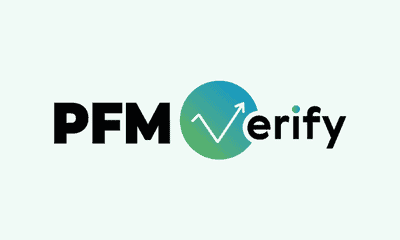Personal loans have become increasingly popular in the U.S. with a total of over 42.7 million active accounts in 2021. A personal loan can be used for various purposes and the amount can differ greatly as well. For these reasons, personal loans may sound like the perfect solution for you, but make sure you educate yourself sufficiently before diving into debt.
Loans are a significant financial investment, so don’t take them lightly. Here are 5 things to consider before you apply for a loan so you can decide whether it’s the best option for you.
1. What are you considering a personal loan for?
Although taking out a loan sounds like it will help you, it might end up hurting you in the long term. Knowing why you need to borrow the money can help you gain a clear understanding of what it is exactly that you need.
You’ve probably heard this over and over again, but saving money is the best way to cover costs. However, saving money takes time and you may be looking for a faster solution. Borrowing money to pay for a broken car, health insurance, or other unexpected costs, isn’t ideal but it may be necessary. If you are considering borrowing money for something that isn’t urgent, it is recommended that you save money instead. Nowadays, there are many tools to help you save money, such as:
- Acorns: automatically invest spare change with round-ups.
- EveryDollar: enter your income, set your budget, and start saving.
- Mint: an overview of all your financial accounts in one place. Create saving goals, view your expenses, and monitor your bills.
- Goodbudget: budgeting with features to pay down debt and set saving goals.
- Trim: negotiates costs on your behalf, reminds you of old subscriptions that you may want to cancel, and analyzes your spending.
2. Different loan options and how to compare them
When you are considering taking out a loan, it is important to understand that this is a serious financial commitment. You must repay the full amount of the loan, interest, and fees, over a set period of time. If you need a larger sum of money, you may want to save up the money or ask a friend or family member for assistance. If this isn’t an option for you, make sure you do your research before saying yes to a personal loan. It’s important to find a lender with a good reputation and terms you’re comfortable with.
Before signing for a loan, you are going to want to evaluate your options. A good place to start is the internet. The offer of loans is competitive, so you can often get great deals online. But keep in mind: if something sounds too good to be true, it’s probably not true!
When you’re considering taking out a loan, it’s important to shop around and compare rates from different lenders. Make an appointment with a local bank to discuss different loan options. If their offer fits your needs, you may be able to get approved immediately.
3. What do I need to submit for a personal loan?
What a lender requests will vary per bank and per type of loan. Besides your contact details, you will most often be asked how much money you need, what you need it for, and what your credit score is.
You can request quotes from different online lenders before making a decision. You can also bring these findings with you when you meet with your bank to discuss the different offers and ask if they can advise you on the best loan for your needs.
4. How much can you afford to borrow and how long will it take to pay it back?
Although the reason for taking out a personal loan may vary from person to person, the one common ground is that at some point the debt will need to be repaid. In order to prevent any unexpected problems with your personal loan balance, make sure you consider your income and your fixed and flexible payments.
If you read this far, you’re probably serious about taking a loan out. You’ve done your research, determined your needs, and are ready to sign. Well, not yet. Before guessing a random amount, let’s think again about what it is that this loan needs to cover.
Although the monthly payment may seem affordable to you, make sure you can truly afford it. For example, if you are taking out a loan to buy a new car and it breaks down, can you still afford the monthly payment on top of the garage costs? Don’t just consider the monthly payment.
Besides considering what you need to repay per month, also think of the total amount that needs to be paid back. A 5% interest rate over a five-year loan might give you a lower monthly payment than 6% over three years, but the total costs you’ll have to pay back are lower when going for the shorter loan with a higher APR. Do the math!
As a good debt-to-income ratio guideline, aim to spend no more than 35% to 43% of your monthly income on debt. For instance, if you earn $3,000 per month after taxes, all your loan payments combined shouldn’t take up more than $1,290.
4. Calculate your credit score and history
At this stage, we know what you need and what the options are, but are those options truly accessible to you? If your credit score is low, it will be more difficult to receive low rates, payments and savings. Shockingly, over 30% of the general population doesn’t know their credit score. Thankfully, MyUSAfinance helps you monitor your credit score. In addition, you are entitled to receive a free copy of your credit report from these credit bureaus each year:
5. Read all paperwork thoroughly before signing
If possible, let a parent or close friend check the paperwork before you sign. A loan is a commitment that can vary from just a few months to over thirty years, so make sure the terms and conditions are in line with your expectations.
Should you have any questions about taking out a personal loan, our financial experts at MyUSAfinance are available to help!











